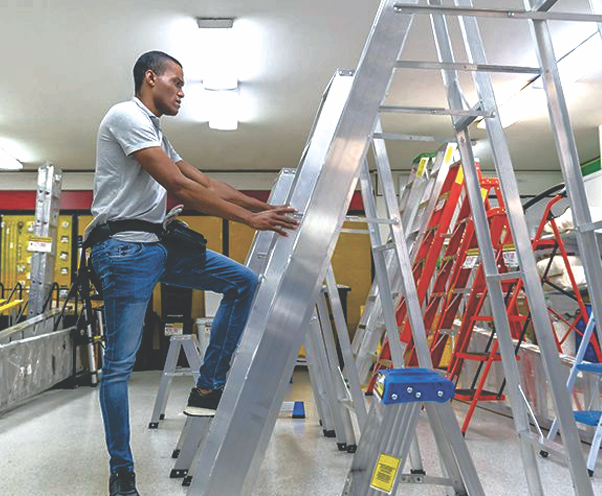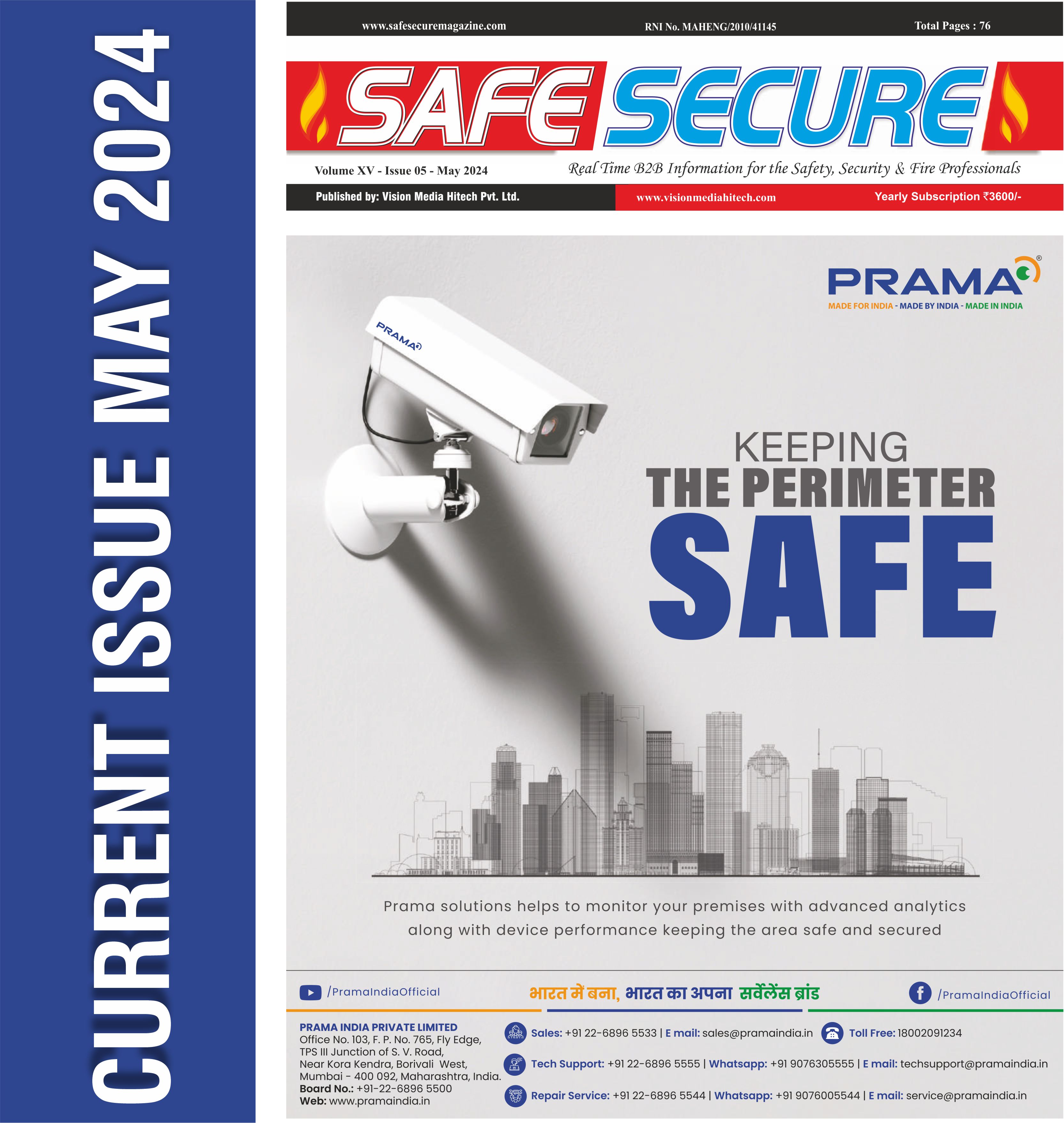Choosing The Right Ladder For The Job

-by Arindam Bhadra
Ladders are such common everyday tools that many workers take them for granted. In late 2016, OSHA published an update to its walking-working surface rule (subpart D) for general industry. Subpart D applies to all general industry workplaces and covers all walking-working surfaces unless specifically excluded by an individual section of the subpart. Specifically, the update incorporates advances in technology, industry best practices and national consensus standards to provide effective and cost-efficient worker protection addressing slip, trip and fall hazards.
The update ushered in some sweeping changes where ladders were concerned. As part of the update, OSHA combined its previously separate regulations for portable wood ladders, portable metal ladders and fixed ladders under one comprehensive ladder standard: 29 Code of Federal Regulations (CFR) 1910.23 which applies to all ladders used in general industry with a few exceptions. Those exceptions are ladders used in emergency operations such as firefighting, rescue and tactical law enforcement operations, or training for those operations, and ladders that are an integral part of a machine or piece of equipment.
The four main components of OSHA’s ladder standard cover:
- ▶ General Requirements for all ladders
- ▶ Portable Ladders
- ▶ Fixed Ladders
- ▶ Mobile Ladder Stands and Mobile Ladder Stand Platforms
Employers are required to ensure that every employee follows this climbing technique.
The General Requirements for all ladders also covers the design specifications for rungs and steps used on ladders and stepstools. The design for rungs and steps must meet the following criteria, in Ladder Rungs, Steps and Cleats, 29 CFR 1910.23(b)(1) – (4)(iv):
- ▶ Parallel, level and uniformly spaced when the ladder is in position for use.
- ▶ Spaced not less than 10 inches and not more than 14 inches apart.
- ▶ Rungs and steps in elevator shafts must be spaced not less than six inches or more than 16.5 inches apart.
- ▶ Fixed ladder rungs and steps on telecommunication towers must be spaced not more than 18 inches apart.
- ▶ Minimum clear width of 11.5 inches on portable ladders and 16 inches for fixed ladders.
- ▶ Manhole entry ladders rungs and steps supported by the manhole opening must have a minimum clear width of nine inches.
- ▶ Telecommunication center rolling ladders rungs and steps must have a minimum clear width of eight inches.
- ▶ Steps tools must have a minimum clear width of 10.5 inches and the steps are not spaced less than eight inches or more than 12 inches apart.
In addition, the General Requirements for all ladders mandate the following, in General Requirements:
- ▶ Wooden ladders must not be coated with any material that may obscure structural defects.
- ▶ Metal ladders must be made with corrosion-resistant material or protected against corrosion.
- ▶ Ladder surfaces must be free of puncture and laceration hazards.
- ▶ Ladders must only be used for the purpose for which they were designed.
- ▶ Ladders must be inspected before initial use in each work shift, and more frequently as necessary, to identify any visible defects that could cause employee injury.
- ▶ Any ladder with structural or other defects must be immediately tagged "Dangerous: Do Not Use," or with similar language and removed from service until repaired or replaced.
Portable Ladders
OSHA defines a portable ladder as one that can readily be moved or carried, usually consisting of side rails joined at intervals by steps, rungs, or cleats. They can be self-supporting or lean against a supporting structure (non-self-supporting).
In Portable Ladders, employers must ensure that:
- ▶ Rungs and steps of portable metal ladders are corrugated, knurled, dimpled, coated with skid-resistant material, or otherwise treated to minimize the possibility of slipping.
- ▶ Each stepladder or combination ladder used in a stepladder mode is equipped with a metal spreader or locking device that securely locks ladder in open position.
- ▶ Ladders are not loaded beyond maximum intended load.
- ▶ Ladders are used only on stable and level surfaces unless they are secured or stabilized to prevent accidental displacement.
- ▶ No single rail ladders are used.
- ▶ Ladders are secured to prevent accidental displacement or guarded by a temporary barricade when used in passageways, doorways, or driveways.
- ▶ Ladders are secured and stabilized if used on slippery surfaces.
- ▶ Ladders are not moved, shifted, or extended while being used.
- ▶ Top step and caps of stepladders are not used as steps.
- ▶ The top of a non-self-supporting ladder is placed so that both side rails are supported unless the ladder is equipped with a single support attachment.
- ▶ If used to gain access to upper landing surface, the side rails extend at least three feet above the upper landing surface.
- ▶ Ladders and ladder sections are not tied or fastened together to provide added length unless designed for such use.
- ▶ Ladders are not placed on boxes, barrels, or other unstable bases to obtain added height.
Fixed Ladders
OSHA defines a fixed ladder as a ladder with rails or individual rungs that is permanently attached to a structure, building or equipment. These do not include ship stairs, step bolts, or manhole steps.
OSHA gets more granular with design requirements for specific types of fixed ladders above and beyond what’s specified under the General Requirements. In Fixed Ladders, employers must ensure that:
- ▶ Ladders can support their maximum intended load.
- ▶ The minimum perpendicular distance from the centerline of the steps or rungs, or grab bars, or both, to the nearest permanent object behind the ladder is seven inches, except for elevator pit ladders, which have a minimum perpendicular distance of four and one-half inches.
- ▶ Grab bars do not protrude on the climbing side beyond the rungs of the ladder that they serve.
- ▶ The side rails of through or sidestep ladders extend 42 inches above the top of the access level or landing platform served by the ladder. For parapet ladders, the access level is the roof, if the parapet is cut to permit passage through the parapet; or the top of the parapet, if the parapet is continuous.
- ▶ For through ladders, the steps or rungs are omitted from the extensions, and the side rails are flared to provide not less than 24 inches and not more than 30 inches of clearance (when a ladder safety system is provided, the maximum clearance between side rails of the extension must not exceed 36 inches).
- ▶ For side-step ladders, the side rails, rungs, and steps are continuous in the extension.
- ▶ Grab bars extend 42 inches above the access level or landing platforms served by the ladder.
- ▶ The minimum cross-section size of grab bars is the same size as the rungs of the ladder.
- ▶ When a fixed ladder terminates at a hatch, the hatch cover opens with enough clearance to provide easy access to or from the ladder and opens at least 70° from horizontal if the hatch is counterbalanced.
- ▶ Individual-rung ladders are constructed to prevent the employee's feet from sliding off the ends of the rungs.
- ▶ Ladders having a pitch greater than 90° from the horizontal are not used.
- ▶ The step-across distance from the centerline of the rungs or steps for through ladders, is not less than seven inches and not more than 12 inches to the nearest edge of the structure, building, or equipment accessed from the ladders.
- ▶ The step-across distance from the centerline of the rungs or steps for side-step ladders is not less than 15 inches and not more than 20 inches to the access points of the platform edge.
- ▶ Ladders that do not have cages or wells have a clear width of at least 15 inches on each side of the ladder centerline to the nearest permanent object and a minimum perpendicular distance of 30 inches from the centerline of the steps or rungs to the nearest object on the climbing side (when unavoidable obstructions are encountered, the minimum clearance at the obstruction may be reduced to 24 inches provided deflector plates are installed).
(This "HSE" Published in November 2023 Edition)












